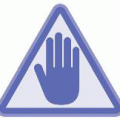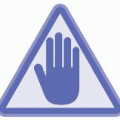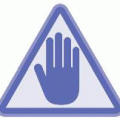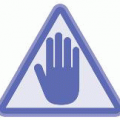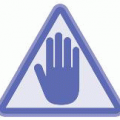and why chemotherapy and biotherapy work. The Infusion Nursing Standards of Practice echo that the nurse who administers antineoplastic agents is competent and has the knowledge of protocols for prescribed therapies (INS, 2011).
Cancer review covering tumor cell kinetics and angiogenesis
The drug development process, legal, and ethical issues related to cancer therapy
Indications, pharmacology, molecular biomarkers, and protectants related to chemotherapy and biotherapy
Principles of cancer chemotherapy and biotherapy
Types, classifications, and routes of administration of chemotherapy and biotherapy agents
Specific drug administration, as well as administration schedules, dose determinations, drug response, and drug delivery systems
Administration procedures, including administration schedule, dose, and route; patient consent; and appropriate medical record documentation
Safe handling practices: use and disposal of personal protective equipment (PPE) drugs
Safe mixing, storage, and labeling, transportation, and disposal of chemotherapeutic and biologic agents
Side effects (acute, late, and long term), as well as principles of management into survivorship, and patient/family education
Drug calculation and dose verification
Drug preparation, handling, and spill management
Drug storage, transport, and disposal of drugs and equipment
Prechemotherapy patient physical and laboratory assessment
Drug administration techniques, including peripheral IV access, central vascular access device (CVAD).
Extravasation and hypersensitivity management
Acute drug side effect management
Appropriate medical record documentation
Patient and family teaching and follow-up
Disease statistics
Carcinogenesis, including cell structure and cell cycle
Primary and secondary prevention of cancer
Seven warning signs of cancer
Diagnostic evaluation and staging of cancer
Treatment goals: cure, control, and palliation
Treatment modalities: indications and side effects
Radiation therapy
Chemotherapy
Biotherapy
Molecular-targeted therapy
Antiangiogenesis therapy
Patient assessment and evaluation
Performance status
Nutritional status
Pain assessment and control
Hematologic assessment
Psychosocial assessment (coping skills and support systems)
Systems review (cardiac, renal, hepatic, pulmonary, GI), comorbidities
Short-term side effects: alopecia, GI reactions, bone marrow suppression, dermatologic and cutaneous disturbances, allergic reactions, phlebitis and extravasation, psychosocial changes
Long-term side effects: genetic, oncogenetic, immunosuppression, reproductive alterations, psychosocial changes
Specific organ toxicities: cardiac, renal, pulmonary, hepatic, GI, neurologic, dermatologic, reproductive
Early detection and prevention of complications
Delivery of expert care
Patient and family education
Psychosocial support throughout the continuum of care (new diagnoses remission, recurrence, end of life, survivorship)
Follow-up support needs: complete remission, disease control, survivorship, hospice
and any other unusual sensations) when vesicant (tissue-damaging) agents are infused because patients can usually detect them before they are apparent to the nurse.
The patient is able to describe his or her understanding of extent of disease and current treatment at a level consistent with cultural and educational background and emotional state.
The nurse and patient (and family) agree on learning outcomes based on the patient’s needs.
The patient participates in decision making regarding plan of care and life activities if desired or possible.
The nurse selects educational methods and materials consistent with the patient’s and family’s learning needs and abilities.
The nurse considers how, when, and by whom teaching will be done.
The nurse continuously evaluates the patient’s and family’s comprehension, with reference to original learning outcomes.
The nurse conscientiously documents all components of the education process. An organized and systematic form in the medical record is an efficient and effective way to ensure that this phase of therapy is up to date and critical components are not missed.
evaluate teaching content and technique by assessing the degree to which expected patient outcomes are achieved:
TABLE 19-1 POTENTIAL BARRIERS TO SUCCESSFUL PATIENT LEARNING | ||||||||||||
|---|---|---|---|---|---|---|---|---|---|---|---|---|
|
TABLE 19-2 EDUCATIONAL ESSENTIALS FOR PATIENTS RECEIVING CHEMOTHERAPY | |||||||||||
|---|---|---|---|---|---|---|---|---|---|---|---|
|
The patient demonstrates knowledge related to diagnosis and disease process:
States diagnosis and explains disease process
Describes previous experience with cancer and treatments
Acknowledges the need for treatment
States alternatives to prescribed treatment
The patient demonstrates knowledge related to rationale for chemotherapy and/or biotherapy:
Verbalizes the need for chemotherapy/biotherapy
Expresses attitude toward and expectations about cancer treatment
States understanding of use of chemotherapy or biotherapy alone or with other treatment modalities, if applicable
Identifies treatment protocol
The patient demonstrates knowledge related to potential therapeutic side effects of chemotherapy/biotherapy:
States diagnosis and expected response to treatment
Identifies specific effect of treatment with antineoplastic agents
The patient demonstrates knowledge of treatment plan and schedule:
Identifies drugs to be given
States frequency and duration of treatment
Identifies studies, tests, and procedures required before treatment
Identifies follow-up tests, studies, and procedures needed to evaluate treatment results
The patient demonstrates knowledge of potential drug side effects:
States mechanism of drug action
Defines reason for side effects
Identifies specific side effects that may occur with each drug
States self-management interventions to control side effects
Verbalizes signs and symptoms reportable to health care professionals
Identifies procedures for reporting signs and symptoms
The patient demonstrates knowledge of techniques to manage antineoplastic treatment:
Maintains nutritional status to best of ability
Follows oral, body, and environmental hygiene measures
Maintains optimal rest and activity pattern
Uses safety precautions to prevent injury
Seeks and uses resources as necessary
Verbalizes reduced anxiety related to treatment
States intention to comply with treatment plan
The patient demonstrates knowledge relative to various access devices, if applicable.
 LEGAL ISSUES
LEGAL ISSUES
Clinical education: Before treating any patient, the nurse’s successful education and competency assessment in IV therapy and drug administration, specifically chemotherapy and biotherapy should be documented and available in personnel files.
Lines of supervision: The nurse should have a clear, written statement of the lines of supervision.
Standards of care: The nurse should have a clear, written statement of the employing facility’s standards of care, including a definition of reasonable care in each pertinent area of practice. Facility-specific policies and procedures and job descriptions should be based on nationally established standards from professional organizations, including but not limited to the Infusion Nurses Society (INS, 2011), ONS, and American Nurses Association (ANA).
Patient and family education: The nurse should initiate and complete patient and family education regarding treatment goals, all medications in the treatment regimen, side effects, length of therapy, and follow-up restaging. Evaluation of the patient’s understanding and response to teaching should be documented.
Informed consent: Patients who are participating in clinical drug trials must sign an informed consent form before administration of the investigational (experimental) protocol. Specific regulations regarding written informed consent for noninvestigational protocols vary from state to state. Although obtaining informed consent is a physician/licensed independent practitioner’s (LIP) responsibility in most states, a nurse should make sure that consent has been granted before administering chemotherapy. The hospital or institution may be held liable if treatment is administered without the informed consent of the patient or responsible parties. Failure to obtain a patient’s consent may constitute battery, defined as any physical contact of a patient without his or her permission.
the nurse provides advice or instructions, should be documented in the medical record (Polovich, 2009).
hazardous drugs should be maintained with careful documentation of spills, spill cleanup, and accidental exposures. Initial training and periodic review of drug preparation and administration practices that include risks of exposure and strategies to minimize exposure can ensure that all staff members have the necessary education to handle hazardous agents in the workplace (Polovich et al., 2009). Successful administration of chemotherapy and biotherapy calls for expert judgment based on scientific evidence. Expert technical skills aside, the safe administration of these agents requires knowledge of preparation, administration, and disposal of hazardous drugs (Box 19-3). A basic understanding of the indications for use and mechanisms of action of antineoplastic drugs is pivotal to the quality of patient care an IV nurse provides. In 2008, the ONS and the American Society of Clinical Oncology partnered together to develop recommendations to improve the quality and safety of
chemotherapy administration. The published 2009 Chemotherapy Administration Safety Standards included 31 voluntary standards focused on the outpatient setting (Jacobson et al., 2009). The ONS/ASCO 2011 revisions expanded the scope of recommendations to include inpatient settings (Jacobson et al., 2012). The next area this collaborative group will look at is the safety of oral chemotherapy (Box 19-4).
Prepare drugs in a Class II type B or Class III vertical airflow biologic safety cabinet. Air is exhausted to the outside through HEPA (high-efficiency particulate absorption) filters. The fan remains on at all times. The hood is serviced and certified by a qualified technician at least every 6 months (Polovich, 2009) according to the manufacturer’s recommendations.
Cover the work surface with a plastic-backed absorbent pad to minimize contamination as long as it does not interfere with the airflow. Change the pad immediately in the event of contamination and at the completion of drug preparation each day or shift.
Use aseptic preparation technique and mix according to the order, other pharmaceutical resources, or both.
Use unpowdered, disposable, good-quality gloves made of latex, nitrile, polyurethane, neoprene, or other materials that have been tested with hazardous drugs. Inspect gloves for visible defects. Use double gloves when preparing hazardous drugs. Tuck the inner glove under the gown sleeve; the cuff of the outer glove extends over the gown sleeve. Change gloves after each use, immediately if torn, punctured, or contaminated with drug or after 30 minutes of wear (ASHP, 2006; NIOSH, 2004; Polovich, 2009).
Wear a disposable long-sleeved gown made of lint-free fabric with knitted cuffs and a solid front during drug preparation. Laboratory coats and other cloth fabrics absorb fluids, so they are an inadequate barrier to hazardous drugs and are not recommended (Polovich, 2009). Discard gown after drug preparation, after handling cytotoxic drugs, and if visibly contaminated. Gowns should not be reused (NIOSH, 2004).
Wear a plastic face shield (protect eye, mouth, and nasal opening) or goggles (only protect eyes) when the possibility of splashing is evident. Use a powered air-purifying respirator or NIOSH-approved face mask when cleaning up cytotoxic spills. Surgical masks do not provide respiratory protection from aerosolized powders or liquids (Polovich, 2009).
Use needles, syringes, tubing, and connectors with Luer-lock connections (Polovich, 2009).
Guard against potential chemical contamination by priming all IV tubing under the protection of the laminar airflow hood with a compatible, nondrug solution before adding hazardous drugs (Polovich, 2009). This prevents potential exposure when connecting IV tubing.
Guard against drug leakage during drug preparation; use special care when reconstituting agents packaged in the following:
Ampules: Clear drug from neck of ampule; break top of the ampule away from the body using a gauze or alcohol pad as protection; withdraw the drug through a filter needle with ampule upright on a flat surface; change the needle before administration (ASHP, 2006).
Vials: Avoid the buildup of pressure within the vial. Use of a closed system (such as PhaSeal [Baxa Corp., Englewood, CO]) limits aerosolization of the drug and worker exposure to sharps when withdrawing hazardous drugs from vials (NIOSH, 2004).
Avoid overfilling syringes (Polovich, 2009).
After reconstituting the drug, label it according to institutional policies and procedures. Include the drug’s vesicant properties and hazardous drug warning on the label.
Transport antineoplastic drugs in an impervious packing material, such as a zippered bag, and mark the bag with a distinctive warning label stating “Cytotoxic Drug” or similar warning (Polovich, 2009).
Dispose of gowns, gloves, and preparation equipment in appropriately labeled puncture-proof containers.
Be informed on procedures to follow in the event of drug spillage.
Ensure that informed consent has been completed before administering any chemotherapeutic agent; also clarify any misconceptions the patient may have regarding the drugs and their side effects, and assure that education has been completed.
Review laboratory test results (e.g., complete blood count, renal and liver function values) for acceptable levels. Drug dosages may need to be adjusted by the physician/LIP according to laboratory values. Cardiac (ECG or multiple-gated acquisition [MUGA] scan) and pulmonary function tests (PFTs) may need to be evaluated based on the drug’s side effect profile.
Determine the vesicant/irritant potential of drugs and implement measures to minimize acute side effects of the drugs before drug administration.
Assess orders for completeness, for example, hydration and premedications such as antiemetics, antianxiety, antihypersensitivity agents (Polovich, 2009).
Have available a chemotherapy spill kit, extravasation management information and antidotes and equipment, and emergency drugs and equipment in case of adverse reactions, such as anaphylaxis.
Review the order. Compare with the formal drug protocol or reference source; check for completeness (schedule, route, admixture solution, etc.; Itano & Taoka, 2005).
Determine drug dose. Verify actual height and weight. Calculate body surface area (BSA) or appropriate dose calculations (e.g., milligrams per kilogram or area under the curve [AUC]).
Perform independent double check on dosage calculations (pharmacist and chemotherapy-credentialed nurse and/or two chemotherapy-credentialed nurses) and verify dose against the physician/LIP’s order. Verify that the dose is appropriate for the patient, diagnosis, and treatment plan (Polovich, 2009).
Check the syringe, IV bag, or bottle against the original medication order to verify medication, dose, route, time, and patient identification, using two different patient identifiers. Perform double check with two chemotherapy-credentialed nurses.
Wear PPE, including nonpowdered surgical latex, nitrile, polyurethane, or neoprene disposable gloves and a disposable gown made of a lint-free, low-permeability fabric with a solid front, long sleeves, and elastic or knit closed cuffs. Double gloving is recommended (NIOSH, 2004). Change gloves after each use, tear, puncture, or contamination or after 30 minutes of wear. Use gloves when handling oral antineoplastic agents. Use face shield if there is a risk of splashing, for example, intravesical instillation (Polovich, 2009).
Gather all supplies needed for drug administration. Protect the work surface with a disposable absorbent pad. Perform all work below eye level. Don PPE and inspect drug container within delivery bag for leaks prior to removing the hazardous drug from the delivery bag. Do not prime or expel air of intravenous (IV), intramuscular (IM), or subcutaneous (SQ) injection syringes (Polovich, 2009).
Confirm patency of line.
Administer the drug or drugs according to established institutional policies and procedures and the physician/LIP’s order, using safe handling precautions.
When infusion has completed, flush IV with a compatible flush solution.
Document drug administration, including any adverse reaction, in the medical record.
Establish a mechanism for identifying the patient receiving antineoplastic agents for the 48-hour period after drug administration.
Implement chemotherapy precautions (gowns, double gloves) when handling body secretions such as urine, stool, blood, or emesis of patients who received hazardous drugs within the prior 48 hours. Dispose of PPE after each use or when it becomes contaminated (NIOSH, 2004).
In the event of accidental exposure, remove contaminated gloves or gown immediately and discard according to institutional procedures.
Wash the contaminated skin with soap and water. Refer to MSDS for agent-specific interventions (Polovich, 2009).
For accidental eye exposure, flood the eye immediately with water or isotonic eyewash for at least 15 minutes. Areas where hazardous drugs are routinely handled should be equipped with an eye wash station (Polovich, 2009).
Obtain a medical evaluation as soon as possible after exposure and document the incident according to institutional policies and procedures.
Hazardous drug waste containers should be available in all areas where hazardous drugs are prepared and administered. Any item that comes in contact with a hazardous drug during preparation or administration is considered potentially contaminated and must be disposed of as hazardous waste (Polovich, 2009).
Discard all contaminated equipment, including needles, intact to prevent aerosolization, leaks, and spills. Dispose of contaminated sharps in a puncture-proof hazardous waste container.
Place contaminated materials including PPE in a sealable 4-mm polyethylene or 2-mm polypropylene bag and dispose of in a leak-proof, puncture-proof container with a distinctive warning label identifying “Hazardous Waste” (NIOSH, 2004; Polovich, 2009).
Put linen contaminated with bodily secretions of patients who have received chemotherapy/biotherapy within the previous 48 hours in a specially marked laundry bag with a distinctive biohazard warning label.
Follow established institutional policies and procedures for management of spills. The size of the spill might dictate who is to conduct the cleanup and decontamination and how the cleanup is managed. A small spill is one that is <l5 mL. A large spill is >5 mL.
Policies/procedures are in place for verification of training and continuing education.
Qualified physicians/LIPs write and sign orders for parenteral and oral chemotherapy.
Qualified pharmacists, pharmacy technicians, and nurses prepare chemotherapy drugs (oral and parenteral).
Chemotherapy is administered only by qualified physicians/LIPs or registered nurses.
A comprehensive educational program is in place for new staff administering chemotherapy; includes competency assessment. The education includes all routes of administration. The ONS Chemotherapy/Biotherapy course meets this criteria.
Annual competency reassessment is done for all staff who administer chemotherapy.
All clinical staff maintain current basic life support (BLS) certification.
Available chart documentation prior to the first administration of a new chemotherapy regimen includes the following:
Pathology report confirming or verifying the initial diagnosis of cancer
Initial cancer stage and current status of the patient’s disease since diagnosis
Medical history and physical, which includes height, weight, and assessment of organ function specific to the planned antineoplastic regimen
Allergies and history of hypersensitivity reactions
The patient’s understanding of the disease and planned medication regimens and associated medications are documented in chart
Psychosocial assessment, identifying concerns, need for support, and interventions taken
Chemotherapy treatment plan (chemotherapy drugs, doses, anticipated durations, and goals of care)
Treatment plan for oral chemotherapy includes schedule of office visits and monitoring based on the antineoplastic drugs and the individual patient
Standard chemotherapy regimens are defined by diagnosis with available references. All chemotherapy regimens have identified sources, including research protocols.
Deviations from standard regimens are supported by a reference. Dose modification or exception orders include the reasons for alterations.
Regimen-specific laboratory tests are determined, and their intervals are determined by evidence-based national guidelines, site practitioners, or as part of the standard chemotherapy orders.
Informed consent for chemotherapy is obtained and documented.
Quality control is maintained for chemotherapy that is mixed off-site.
New orders and changes in chemotherapy orders are made in writing. There are no verbal orders except to hold or stop chemotherapy administration.
Parenteral chemotherapy orders are a standardized, regimen based in either a preprinted format or as electronic forms in e-prescribing software.
Orders list all medications by generic names and avoid all Joint Commissions’ prohibited abbreviations. All chemotherapy drugs in the regimen with their dosing are listed in the orders.
Complete orders include the patient’s name/second identifier, date, diagnosis, regimen name and cycle number, treatments conditions (lab results and toxicities) to be met to treat, allergies, established standards for dose calculation, height, weight, dosage, route and rate of administration, length of infusion, premedications, hydration, growth factors, and hypersensitivity medications, sequence of drug administration, time limit to ensure evaluation at designated intervals.
A second chemotherapy-credentialed practitioner verifies each order prior to preparation, confirming two patient identifiers, drug names, doses, volumes, rate and route of administration, dose calculations, and cycle and day of cycle.
Chemotherapy drugs are labeled upon preparation with the patient’s full name and second identifier, generic drug name, route, total volume required to give dose, date of administration, and date/time of preparation and expiration.
A policy for administration of intrathecal medications includes separate preparation from other drugs, stored after preparation in an isolated area with a unique intrathecal medication label, and delivery of the medication to the patient only with other medications for the central nervous system (CNS).
The patient consent information includes diagnoses, goals of treatment, drugs, schedule, and length of treatment, short- and long-term side effects, drug-specific symptoms that trigger contact with the provider, and how to contact the provider and plan for follow-up and monitoring.
Informed consent is documented prior to initiation of the chemotherapy administration.
Patients prescribed oral chemotherapy are taught preparation, administration, and disposal of oral chemotherapy. Written information is provided to the patient and family and caregivers who will be assisting the patient in managing the therapy.
Prior to chemotherapy administration, confirm with the patient planned therapy before each cycle.
Two chemotherapy-credentialed practitioners verify the accuracy of drug names, dose, volume, rate, route, expiration dates/times, appearance, and physical integrity of drugs. This verification is documented in the medical record.
In front of the patient, two individuals verify the identity of the patient using two identifiers.
Extravasation procedures are current and referenced. Orders and access to antidotes are ensured.
A physician/LIP is on-site and immediately available during all chemotherapy administration.
Response protocols are established and reviewed annually to manage life-threatening emergencies that include BLS and transfer to location for higher acuity patient support.
At each clinical visit or day of treatment: Assess and document clinical status, performance status, vital signs, weight, allergies, previous reactions, toxicities (NCI or WHO toxicity criteria), current medication list including OTV meds, complimentary/alternative therapies. Review and document medication changes.
Assess psychosocial concerns, identify needs, and refer to appropriate psychosocial and other support services.
Follow-up with patients who miss appointments and/or scheduled chemotherapy treatments.
Policy/procedure is in place for 24/7 access to a provider/department for care of side effects. A process for hand-off communication allows for written/verbal communication of toxicities across settings to provide continuity of care.
Cumulative doses of specific drugs, for example, doxorubicin, are tracked to determine the risk of cumulative toxicity.
The patient response to treatment is monitored using evidence-based standard disease-specific criteria.
that augment, modulate, or restore the immune response of the host; agents that have direct anticancer activity (antiproliferation or cytotoxic effect on cancer cells); agents that increase the vulnerability of cancer cells to the body’s immune system; agents that change the pathway that transforms normal cells to cancer cells; those agents that enhance the repair of normal cells damaged by therapy; agents that prevent metastasis; and lastly, agents that change the behavior of cancer cells to normal cells (Polovich et al., 2009).
TABLE 19-3 QUICK REFERENCE TO COMMONLY ADMINISTERED PARENTERAL CHEMOTHERAPEUTIC AGENTS | ||||||||||||||||||||||||||||||||||||||||||||||||||||||||||||||||||||||||||||||||||||||||||||||||||||||||||||||||||||||||||||||||||||||||||||||||||||||||||||||||||||||||||||||||||||||||||||||||||||||||||||||||||||||||||||||||||||||||||||||||||||||||||||||||||||||||||||||||||||||||||||||||
|---|---|---|---|---|---|---|---|---|---|---|---|---|---|---|---|---|---|---|---|---|---|---|---|---|---|---|---|---|---|---|---|---|---|---|---|---|---|---|---|---|---|---|---|---|---|---|---|---|---|---|---|---|---|---|---|---|---|---|---|---|---|---|---|---|---|---|---|---|---|---|---|---|---|---|---|---|---|---|---|---|---|---|---|---|---|---|---|---|---|---|---|---|---|---|---|---|---|---|---|---|---|---|---|---|---|---|---|---|---|---|---|---|---|---|---|---|---|---|---|---|---|---|---|---|---|---|---|---|---|---|---|---|---|---|---|---|---|---|---|---|---|---|---|---|---|---|---|---|---|---|---|---|---|---|---|---|---|---|---|---|---|---|---|---|---|---|---|---|---|---|---|---|---|---|---|---|---|---|---|---|---|---|---|---|---|---|---|---|---|---|---|---|---|---|---|---|---|---|---|---|---|---|---|---|---|---|---|---|---|---|---|---|---|---|---|---|---|---|---|---|---|---|---|---|---|---|---|---|---|---|---|---|---|---|---|---|---|---|---|---|---|---|---|---|---|---|---|---|---|---|---|---|---|---|---|---|---|---|---|---|---|---|---|---|---|---|---|---|---|---|---|---|---|---|---|---|---|---|---|---|---|---|---|---|---|---|---|---|
|
Stay updated, free articles. Join our Telegram channel

Full access? Get Clinical Tree


